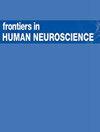社交信息使用的脑结构相关性:一种探索性机器学习方法
IF 2.7
3区 医学
Q3 NEUROSCIENCES
引用次数: 0
摘要
导言社会学习中的个体差异影响着从投票行为到两极分化等许多重要决策。先前的研究发现,在社会信息使用方面存在着持续而稳定的个体差异。方法我们使用了两种互补的探索性机器学习方法来识别与社交信息使用的个体差异相关的脑容量。结果与讨论使用套索回归和随机森林回归,我们能够捕捉大脑与行为之间的线性和非线性关系。与之前的研究一致,我们的结果表明左侧三角旁的体积与社交信息的使用之间存在稳健的正相关关系。此外,我们的研究结果在很大程度上与常见的社交脑网络区域重叠,如内侧前额叶皮层、颞上沟、颞顶交界处和前扣带皮层。此外,我们的分析还发现了几个与社交信息使用的个体差异有关的新区域,如中央后回、左侧额叶中回尾部、左侧苍白球和内侧皮层。总之,这些结果为社会学习中个体差异的神经机制提供了新的见解,并为未来的研究提供了重要的新线索。本文章由计算机程序翻译,如有差异,请以英文原文为准。
Brain structure correlates of social information use: an exploratory machine learning approach
IntroductionIndividual differences in social learning impact many important decisions, from voting behavior to polarization. Prior research has found that there are consistent and stable individual differences in social information use. However, the underlying mechanisms of these individual differences are still poorly understood.MethodsWe used two complementary exploratory machine learning approaches to identify brain volumes related to individual differences in social information use.Results and discussionUsing lasso regression and random forest regression we were able to capture linear and non-linear brain-behavior relationships. Consistent with previous studies, our results suggest there is a robust positive relationship between the volume of the left pars triangularis and social information use. Moreover, our results largely overlap with common social brain network regions, such as the medial prefrontal cortex, superior temporal sulcus, temporal parietal junction, and anterior cingulate cortex. Besides, our analyses also revealed several novel regions related to individual differences in social information use, such as the postcentral gyrus, the left caudal middle frontal gyrus, the left pallidum, and the entorhinal cortex. Together, these results provide novel insights into the neural mechanisms that underly individual differences in social learning and provide important new leads for future research.
求助全文
通过发布文献求助,成功后即可免费获取论文全文。
去求助
来源期刊

Frontiers in Human Neuroscience
医学-神经科学
CiteScore
4.70
自引率
6.90%
发文量
830
审稿时长
2-4 weeks
期刊介绍:
Frontiers in Human Neuroscience is a first-tier electronic journal devoted to understanding the brain mechanisms supporting cognitive and social behavior in humans, and how these mechanisms might be altered in disease states. The last 25 years have seen an explosive growth in both the methods and the theoretical constructs available to study the human brain. Advances in electrophysiological, neuroimaging, neuropsychological, psychophysical, neuropharmacological and computational approaches have provided key insights into the mechanisms of a broad range of human behaviors in both health and disease. Work in human neuroscience ranges from the cognitive domain, including areas such as memory, attention, language and perception to the social domain, with this last subject addressing topics, such as interpersonal interactions, social discourse and emotional regulation. How these processes unfold during development, mature in adulthood and often decline in aging, and how they are altered in a host of developmental, neurological and psychiatric disorders, has become increasingly amenable to human neuroscience research approaches. Work in human neuroscience has influenced many areas of inquiry ranging from social and cognitive psychology to economics, law and public policy. Accordingly, our journal will provide a forum for human research spanning all areas of human cognitive, social, developmental and translational neuroscience using any research approach.
 求助内容:
求助内容: 应助结果提醒方式:
应助结果提醒方式:


